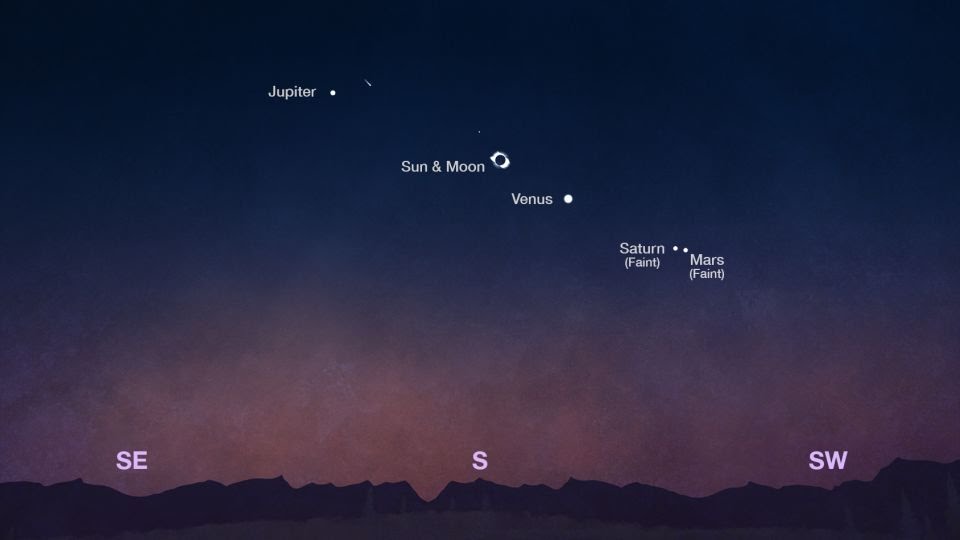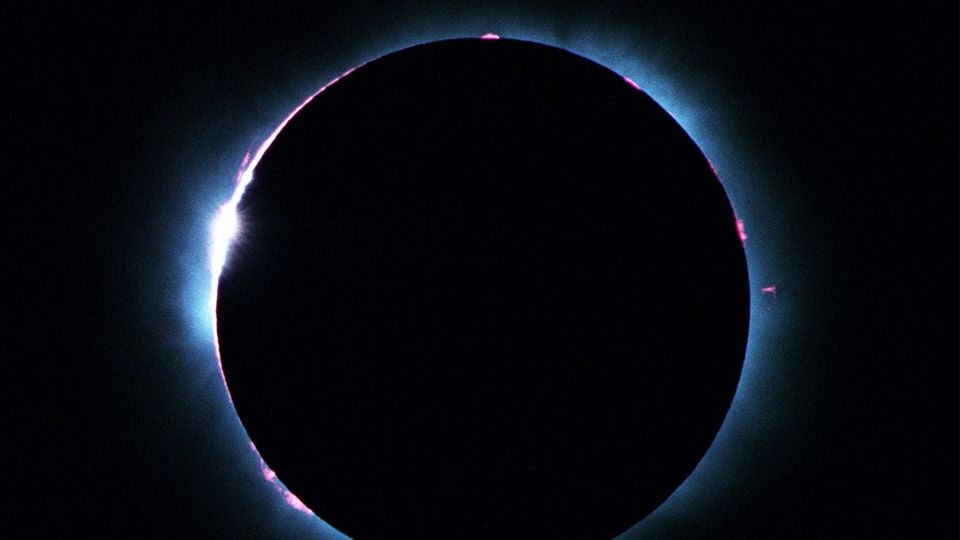Table of Contents
The long-awaited moment has arrived. Following a nearly seven-year anticipation, it is now time for a remarkable celestial event to unfold—the total solar eclipse. This captivating phenomenon will grace the skies over the United States, along with portions of Mexico and Canada.
Approximately 32 million individuals throughout the US reside within the path of totality, where the moon will completely obscure the sun’s face, providing a brief yet breathtaking spectacle.
Commencing its journey over the South Pacific Ocean, the eclipse will traverse North America. The initial point of totality lies along Mexico’s Pacific coast, anticipated at 11:07 a.m. PT (2:07 p.m. ET), with the event concluding on the Atlantic coast of Newfoundland at 5:16 p.m. local time (3:46 p.m. ET).
To ascertain the eclipse’s appearance and timing in your area, consult our comprehensive map.
Individuals situated precisely along the path’s centerline will witness an eclipse lasting between 3 ½ to 4 minutes, as outlined by NASA.
In the United States, residents of Texas, Oklahoma, Arkansas, Missouri, Illinois, Kentucky, Indiana, Ohio, Pennsylvania, New York, Vermont, New Hampshire, and Maine will have the opportunity to observe a total solar eclipse. However, adverse weather conditions may dampen the experience for some.
Outside the path of totality, individuals will still witness a partial solar eclipse, characterized by the moon appearing to take a crescent-shaped “bite” out of the sun.

Special eclipse moments 1.1
1. Partial Eclipse Phase
As the moon gradually moves over the sun, observe the partial eclipse phase, which can last from 70 to 80 minutes.
2. Sky Darkening
About 15 to 20 minutes before totality, notice the skies starting to darken, creating an eerie gray hue.
3. Baily’s Beads
Look for drops of sunlight forming around the moon, known as Baily’s beads, as sunlight streams over lunar surface features.
4. Diamond Ring Effect
Witness the merging of some of these drops, creating a glistening “diamond ring” effect.
5. Totality Begin
As the moon completely obscures the sun, experience the onset of totality, with only the sun’s corona visible.
6. Corona Observation
Marvel at the sun’s corona, its hot outer atmosphere, visible only during totality and offering insights into its structure and temperature.
7. Planetary Views
Keep an eye out for planets such as Jupiter, Venus, Mars, and the faint light from Saturn in the sky during the eclipse.
8. Behavioral Changes
Observe changes in animal behavior, with diurnal animals possibly falling silent and nocturnal creatures becoming active.
9. Temperature Drop
Experience a brief drop in local temperatures during totality.
10. Post-Totality Phases
After totality ends, witness the diamond ring effect on the opposite side of the moon, followed by Baily’s beads and the transition to a partial eclipse as the alignment of the sun, moon, and Earth shifts.
Special eclipse moments 1.2
While the total solar eclipse’s totality steals the spotlight, there are several other noteworthy phases leading up to this grand event.
Preceding the much-anticipated totality is the partial eclipse phase, which extends for the longest duration of the eclipse, spanning approximately 70 to 80 minutes. As the moon gradually advances over the sun, spectators can anticipate a significant indicator when the sky begins to dim and adopt an eerie gray hue, signaling the impending totality roughly 15 to 20 minutes in advance.
In the moments leading up to the complete concealment of the sun’s light, spectators can observe several rapid phases. Notably, the formation of luminous droplets of sunlight around the moon, recognized as Baily’s beads, occurs as sunlight permeates the lunar surface’s craters and valleys. Within approximately 30 seconds to a minute, these droplets coalesce, producing a shimmering “diamond ring” effect. Shortly thereafter, the moon will completely obstruct the sun, leaving only a luminous halo—the sun’s corona—visible during totality.
The corona, the sun’s hot outer atmosphere, emits faint light detectable only when the sun’s intensely bright surface is obscured. Astronomers eagerly anticipate studying the corona’s intricate structures and the puzzling phenomenon of its temperature, which exceeds millions of degrees Celsius compared to the sun’s surface.
Although totality commands attention, spectators may also catch glimpses of Jupiter, Venus, Mars, and the subtle illumination from Saturn in the sky surrounding the eclipse. Additionally, while the “devil comet,” Comet 12P/Pons-Brooks, may be too faint for naked-eye observation, astronomers emphasize the eclipse’s significance as the prime viewing opportunity.
During the brief darkness of totality, diurnal animals may fall silent, while nocturnal creatures like crickets may become active—a behavioral phenomenon scientists are keen to investigate further, with public participation encouraged in ongoing research initiatives.
Furthermore, a momentary drop in local temperatures can be expected during the fleeting moments of totality. As totality concludes, observers will witness the diamond ring effect on the opposite side of the moon, followed by the reappearance of Baily’s beads, culminating in a partial eclipse as the temporary alignment of the sun, moon, and Earth—known as syzygy—draws to a close.
When is the upcoming eclipse anticipated ?
Following the conclusion of the total solar eclipse, there will be a considerable wait until the next such celestial phenomena grace the skies of the United States.
Residents of Alaska will be treated to a total solar eclipse on March 30, 2033, while a partial solar eclipse will be visible across most of the US during this event.
The contiguous US will not witness another total solar eclipse until August 22, 2044, although totality will only occur over North Dakota and Montana, as well as parts of northern Canada.
However, enthusiasts can mark their calendars for the next coast-to-coast total solar eclipse, slated for August 12, 2045. This eclipse’s path of totality will stretch over California, Nevada, Utah, Colorado, Kansas, Oklahoma, Arkansas, Mississippi, Alabama, and Florida, with a partial eclipse observable in other states.










